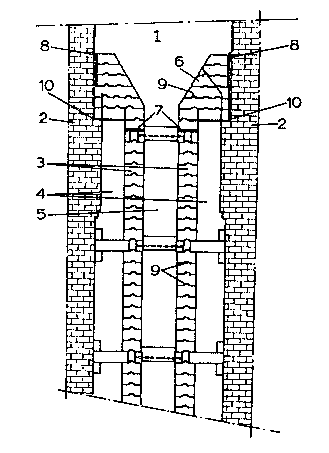Some of the information on this Web page has been provided by external sources. The Government of Canada is not responsible for the accuracy, reliability or currency of the information supplied by external sources. Users wishing to rely upon this information should consult directly with the source of the information. Content provided by external sources is not subject to official languages, privacy and accessibility requirements.
Any discrepancies in the text and image of the Claims and Abstract are due to differing posting times. Text of the Claims and Abstract are posted:
| (12) Patent: | (11) CA 1303849 |
|---|---|
| (21) Application Number: | 1303849 |
| (54) English Title: | CERAMIC BURNER FOR A HOT-BLAST STOVE |
| (54) French Title: | BRULEUR EN CERAMIQUE POUR FOUR A AIR CHAUD |
| Status: | Expired and beyond the Period of Reversal |
| (51) International Patent Classification (IPC): |
|
|---|---|
| (72) Inventors : |
|
| (73) Owners : |
|
| (71) Applicants : |
|
| (74) Agent: | SMART & BIGGAR LP |
| (74) Associate agent: | |
| (45) Issued: | 1992-06-23 |
| (22) Filed Date: | 1988-08-29 |
| Availability of licence: | N/A |
| Dedicated to the Public: | N/A |
| (25) Language of filing: | English |
| Patent Cooperation Treaty (PCT): | No |
|---|
| (30) Application Priority Data: | ||||||
|---|---|---|---|---|---|---|
|
CERAMIC BURNER FOR A HOT-BLAST STOVE
ABSTRACT OF THE DISCLOSURE
A ceramic burner for a hot blast stove,
having a burner head where the combustion components
mix and an air duct and a gas duct beneath the head
for conducting combustion components to the head,
the gas duct is within the air duct and is bounded
by a wall. To prevent stresses due to differences
of thermal expansion at least one horizontal sliding
joint is arranged in the bounding wall of the gas
duct closely under the burner head. The air duct is
bounded by a brickwork wall which continues upwardly
past the burner head and forms a combustion chamber.
The burner head projects over and is supported by a
shoulder in this wall and an essentially vertical
expansion joint is located between the burner head
and the wall.
Note: Claims are shown in the official language in which they were submitted.
Note: Descriptions are shown in the official language in which they were submitted.

2024-08-01:As part of the Next Generation Patents (NGP) transition, the Canadian Patents Database (CPD) now contains a more detailed Event History, which replicates the Event Log of our new back-office solution.
Please note that "Inactive:" events refers to events no longer in use in our new back-office solution.
For a clearer understanding of the status of the application/patent presented on this page, the site Disclaimer , as well as the definitions for Patent , Event History , Maintenance Fee and Payment History should be consulted.
| Description | Date |
|---|---|
| Inactive: IPC from MCD | 2006-03-11 |
| Inactive: IPC from MCD | 2006-03-11 |
| Time Limit for Reversal Expired | 2002-06-25 |
| Letter Sent | 2001-06-26 |
| Grant by Issuance | 1992-06-23 |
There is no abandonment history.
| Fee Type | Anniversary Year | Due Date | Paid Date |
|---|---|---|---|
| MF (category 1, 6th anniv.) - standard | 1998-06-23 | 1998-05-11 | |
| MF (category 1, 7th anniv.) - standard | 1999-06-23 | 1999-05-12 | |
| MF (category 1, 8th anniv.) - standard | 2000-06-23 | 2000-05-15 |
Note: Records showing the ownership history in alphabetical order.
| Current Owners on Record |
|---|
| HOOGOVENS GROEP BV |
| Past Owners on Record |
|---|
| JACOB FELTHUIS |
| RONALD JOHANNES MARIA STOKMAN |